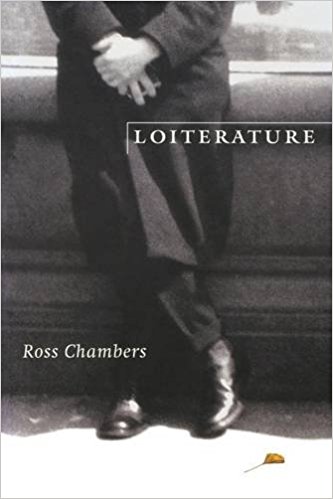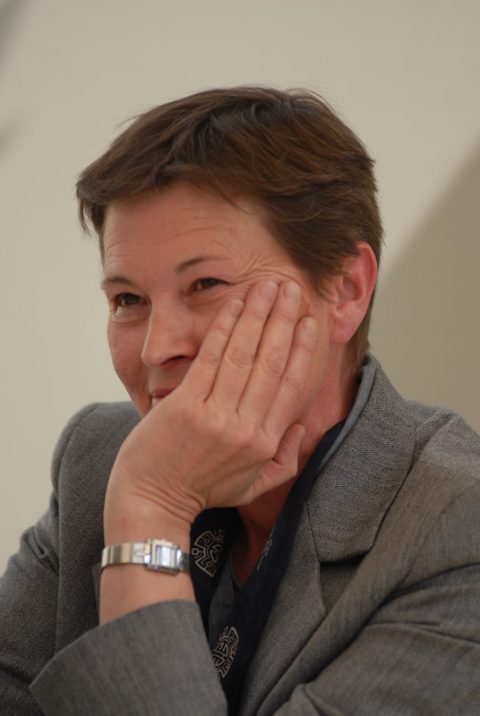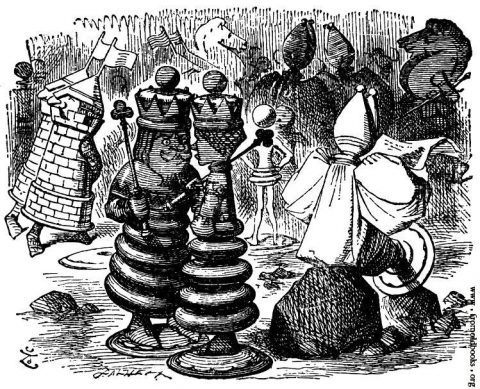.
When I was recently invited to deliver a talk at the institution where I have worked for the past thirty years, it was suggested to me that while I was free to speak about anything at all, my hosts would be pleased if I spoke about something that interests me deeply. So, after long and extremely contentious negotiations with myself, I decided to speak about literature. And more particularly still, about fiction. And still more particularly still, about the kinds of spaces that fiction defines. For we are creatures of space, after all. We dwell in many different kinds of space, often simultaneously. We think about space in a variety of ways, some of them fairly straightforward, others more than passingly vexed. It is legitimate to say that as much as we inhabit space, space inhabits us, significantly shaping the way we imagine ourselves and the way we come to be in the world.
Granted that, it seems to me that the notion of space is far more intriguing when it is conceived as a cultural topos than when we think of it as a natural phenomenon. Rather than something merely given, something that simply is, it is productive to think of space as something constructed, something forged both in and through culture. That sort of perspective provides more room for maneuver, more room for speculation, more room for play—in short more room for us.
Observations such as those may seem to be perfectly patent when it is a question of literary space, rather than of the space defined by the Grand Canyon, the Kalahari Desert, or the Mariana Trench. Yet I would like to suggest that there is no compelling reason for us to read those latter spaces more literally than we do the spaces we encounter in the books we read. And conversely (but in that very same light), it is from time to time both useful and tonic, I think, to imagine literary space in a very literal manner indeed—a relatively easy task for those literalists among us. I count myself as one of that breed, as a person consistently delighted by letters, and by the spaces that they limn.
Among the many pleasures that fiction puts on offer, the opportunity to lose oneself in mild abstraction is by no means the least; and I imagine that all of us have availed ourselves of that opportunity, whether sparingly or in a more insouciant manner. For my part, I am intrigued by the different shapes that state of abstraction assumes, and by its conditions of possibility. I would propose to parse it closely and methodically here, were it not for the fact its dimensions are so mutable, as mutable in fact as individual readerly experience can be. Instead, I shall focus on a few textual passages that seem to me to incorporate clear invitations to the kind of abstracted state that interests me, hoping thereby better to understand that phenomenon.
 Jean-Philippe Toussaint
Jean-Philippe Toussaint
The first passage I would like to visit occurs when the narrator of Jean-Philippe Toussaint’s The Bathroom is gazing out of his window into a rainswept Parisian street:
It was raining. The street was wet, the sidewalks dark. Cars were parking. Other cars, already parked, were covered with rain. People were crossing the street quickly, going in and out of the post office in the modern building across from me. A little vapor began to cover my windowpane. Behind the thin coat of mist, I observed the passersby sending their letters. The rain gave them a conspiratorial air: stopping in front of the mailbox, they would draw an envelope from their coat and thrust it through the slot very quickly so as not to get it wet, meanwhile pulling up their collars against the rain. I put my face close to the window and, eyes against the glass, suddenly had the impression that all these people were inside an aquarium. Perhaps they were afraid? The aquarium was slowly filling. (20)
Many things could be said about this textual moment. I am chiefly interested, however, in the way that the narrator imagines his own situation with regard to the world around him. On the one hand, he is clearly inside his apartment, looking out at the street and at the people hurrying along it. On the other hand, as soon as he imagines that those people are in an aquarium, his position shifts to that of someone on the outside looking in. That inside-outness is more than passingly uncanny; and yet it seems to me perfectly exemplary of the kind of site that we inhabit when we read fiction.
For clearly, reading is a real-world activity. By that I mean that it takes place in the world of phenomena, a behavior that is conditioned (and sometimes constrained) by real-world considerations. We sit upright in our favorite chair or sprawl flat out on our sofa; the dogs are barking or they are silent; the telephone rings or it does not; our gimpy right knee is bothering us or it feels okay; we have paid our taxes on time or we are badly in arrears. Yet when we read fiction, we also dwell in the fictional world. Therein, we partake of the heady fruit of the lotus and lose ourselves. We gaze aghast upon the tortured souls in the eighth circle of Hell; we listen as a peer of the realm sounds his horn too late; we test the keen edge of a harpoon honed by a tattooed Kokovokoan; we detect the very particular aromas emanating from the kitchen as a middle-aged Irishman prepares to dine on the inner organs of beasts and fowls; we taste a perfectly prepared martini cocktail, shaken, not stirred.
In other terms, we are always divided when we read fiction. We are here, but we are also there—and vice versa, as it were. And in that light, we are very unlike the fictional characters who fascinate us. In her novel Western, Christine Montalbetti remarks that “only fictional characters are completely wrapped up in what they are doing” (Western 53). She is undoubtedly correct, insofar as fictional characters remain within the boundaries of their fictional worlds. For one imagines that if Emma Bovary or Stephen Dedalus were to set foot in the phenomenal world, they might find themselves just as divided as you or me. On the face of it, that latter eventuality seems absurd; yet we readers emigrate quite blithely from one world to another. We step into a fictional world, and thrash about therein in an effort to make it our own, suspending certain ways of thinking about the world, and heightening others, depending upon local circumstances.

One can be more literalist about this matter, or more coolly figuralist. Either way, one is obliged to realize that our readerly self is significantly divided. Ross Chambers has argued that certain kinds of literature promote that kind of divided attention far more than others. Pointing toward works that play upon the dilatory, upon apparent idleness and diversion, Chambers coins the term loiterature to designate them. “Critical as it may well be behind its entertaining façade,” he argues, “loiterly writing disarms criticism of itself by presenting a moving target, shifting as its own divided attention constantly shifts” (Loiterature 9). That kind of literature wagers squarely, I believe, upon our own willingness to be divided. Jean-Philippe Toussaint, in the passage that I quoted, invites us to read in that divided manner through the mediation of his protagonist, whose attention is so patently divided. Now, it is reasonable to imagine that the extent of that division (or the proportion of our attention devoted to the real or the fictional world at any given moment) will depend upon a variety of factors: the excellence of the text; the suggestibility and general humor of the individual reader; the local circumstances in which the act of reading takes place; and other considerations still more imponderable. Yet it is legitimate to say that any reading will entail a division of the subject’s attention, to a greater or a lesser degree—or, in other terms, an abstraction.

Seen in long focus, what is surprising about our behavior as readers is how easily we migrate from the phenomenal world to the fictional world, and back again. Indeed, that migration is so fluid and so constant that it may be more useful to imagine the reader as inhabiting both worlds simultaneously. In his study of the mise-en-abyme, Lucien Dällenbach suggests that that figure can assume three broad shapes. First, the simple emblazonment of like within like: a play within a play, a novel within a novel. Second, a structure of infinite emblazonment: the Quaker on a box of Quaker Oats holding in his hand a box of Quaker Oats upon which a smaller Quaker holds a box of Quaker Oats, and so forth. Finally, an aporetic emblazonment in which the relations between container and contained are shifting and unclear (Le Récit spéculaire 37-38, 51). That latter structure is a good way to conceive of our situation as readers of fiction, I think, because it accounts for the difficulty we experience as we try to analyze the relations between our divided readerly selves, and it allows us to imagine the real world and the fictional world in an isotopical and mutually implicative fashion, rather than in a hierarchical manner where one is always subordinated to the other. That perspective provides us in turn with a more lucid vision of our behavior as readers, a set of gestures that is sharpened, intensified, and refined by the immersive power of fiction.
Fiction constantly reminds us that the real and the imaginary are both mobile constructs rather than static ones, that they can be conceived only in their reciprocal mobility, and that we, too, are constantly in motion. We cannot survey either world, thus, from a fixed and stable vantage point; rather, we must apprehend things in their proper flow while we ourselves are in a state of flux. Such a process can be extremely arduous, and sometimes our mind rebels. Sometimes our need for stability is so imperious that we persuade ourselves of our stillness, against the evidence of our senses. Chris Scott constructs a scene like that in To Catch a Spy: “The train’s hydraulics hissed and the station moved backwards as if jolted by an unseen hand” (310). The sensation that his character experiences is familiar to most of us (though these days it is more likely to occur when a plane we’re in pulls back from the jetway). The very brief moment that it takes for us to recalibrate and realize that it is in fact we who are moving never fails to produce an uncanny feeling, one that hinges largely on a jarring shift from subject to object. We prefer to occupy the former site if we can, until incidence or coincidence evicts us, for it is a place of privilege with regard to everything that surrounds it. It enables us to survey things as if we were not part of them, nor subject to the laws that govern them. It allows us to think that we are central. It indulges our wish to believe that things are about us.
 Hélène Lenoir
Hélène Lenoir
Upon rare occasion, one may experience a sensation that plays out in a fashion contrary to the one I have just described, that is, where one has the impression of moving, though one is in fact remaining still. Consider for example this scene from Hélène Lenoir’s Le Répit, where a man seated in a train at rest in a station gazes out the window at another train: “The train slowly pulling out on the other side of the platform made him think for a few seconds that he himself was leaving” (122; my translation). The impression that this event produces in the man is no less uncanny than the one that Chris Scott’s character experiences, even though the circumstances appear so different. In both instances, it is a question of misinterpretation, of course; yet that misinterpretation is itself brimming with meaning, a meaning that focuses most fundamentally upon how we conceive the world and our place in it.
 The Red Queen and the Red King in “Through the Looking-Glass And What Alice Found There” (1871).
The Red Queen and the Red King in “Through the Looking-Glass And What Alice Found There” (1871).
I wonder if we may have been struck by the sensation that Scott and Lenoir invoke in yet another context. I wonder if we may have had a very similar feeling from time to time when reading fiction. When some event in the phenomenal world jolts us out of our immersion in the fictional world, for instance, and we shake our heads for a moment while we recalibrate, not quite knowing which world trumps the other. Much like Alice, waking from her dream, when she wonders if the Red King was a figure in her dream or if she was a figure in his dream (344). I am encouraged in this line of thinking by another passage in Toussaint’s novel. Once again, it takes place in a train, traveling between Paris and Venice:
I had spent the night in a train compartment, alone, with the lights out, immobile. Aware of motion, only motion; of the outward perceptible motion that was transporting me despite my immobility, but also of the inner motion of my body that was destroying itself, an imperceptible motion that began to occupy my attention to the exclusion of all else, a motion I desperately wanted to seize hold of. But how to grasp it? (39)
How indeed? The narrator’s situation is a peculiar one, for he feels himself to be immobile contrary to all evidence. Immobile both with regard to the world outside, as the train speeds across the landscape, and with regard to the world inside, as his own bodily processes push him toward death. Belonging thus neither to the outside nor to the inside, where in the world can he be? Once more, it seems to me that the sites toward which Toussaint is pointing are spaces that fiction constructs; and his text invites us again and again, in a variety of manners, to inhabit those spaces. It is not simply a matter of suspension of disbelief, nor of a deliberate forgetting. It is more like an invitation to multiply ourselves, to imagine our selves as dwelling in different places simultaneously, and acting productively in each. Toussaint’s invitation involves thus a choice taken deliberately and lucidly; it puts on offer a significant franchise in the production of meaning; and it inevitably prompts us to reflect upon literature and its uses—an activity that is almost always advantageous, in my experience, and very unlikely to cause permanent damage.
My brief for an abstracted, inside-out mode of reading is a simple one, and undoubtedly naive. Though it may seem utopian to some, it is chiefly founded in pragmatics, for to my way of thinking it describes the way we actually behave when we read fiction. It suffices to realize that we are far more supple, more tolerant, more agile, more playful when we approach a fictional world than we typically are when we grapple with the phenomenal world. It also helps to recognize that we can immerse ourselves up to our necks in fiction, while never abdicating our critical faculties, that the one gesture does not debilitate the other. To the contrary, immersion actuates our critical sense, and our critical sense stokes our desire to inhabit the fictional world. If such were not the case, Jean-Philippe Toussaint’s protagonist would see nothing more than a rainy street when he gazes out the window. And gazing upon him, we would see no more than random scribblings on a page. Odysseus, Panurge, Eugénie Grandet, Gregor Samsa, Humbert Humbert, Oskar Matzerath, all of them from Ahab to Zeno, mere constructs! And their worlds pure figments: no more flying carpets, no more hansom cabs, no more magic lamps, no more tartar steppes! Such a perspective does not bear contemplation for long. Its very bleakness urges us toward another position, I think. One that we can occupy at our leisure, and wherein we are no longer obliged to choose between subject and object, self and other, inside and out.
—Warren Motte
§
Works Consulted
Carroll, Lewis. Through the Looking-Glass and What Alice Found There. In Martin Gardner, ed. The Annotated Alice. Seaton: Bramhall House, 1960. 167-345.
Chambers, Ross. Loiterature. Lincoln: University of Nebraska Press, 1999.
Dällenbach, Lucien. Le Récit spéculaire: Essai sur la mise en abyme. Paris: Le Seuil, 1977.
Lenoir, Hélène. Le Répit. Paris: Minuit, 2003.
Montalbetti, Christine. Western. 2005. Trans. Betsy Wing. Champaign: Dalkey Archive Press, 2009.
Scott, Chris. To Catch a Spy. Harmondsworth: Penguin, 1979.
Toussaint, Jean-Philippe. The Bathroom. 1985. Trans. Nancy Amphoux and Paul De Angelis. Champaign: Dalkey Archive Press, 2008.
.
Warren Motte is College Professor of Distinction at the University of Colorado. He specializes in contemporary French literature, with particular focus upon experimentalist works that put accepted notions of literary form into question. His most recent books include Fables of the Novel: French Fiction since 1990 (2003), Fiction Now: The French Novel in the Twenty-First Century (2008), Mirror Gazing (2014), and French Fiction Today (2017).
.
.


Just finished reading FRENCH FICTION TODAY and it’s great! Wonderful insights into the writing of some excellent contemporary authors. Recommended!
Just finished this and want to say how much I enjoyed it – “It suffices to realize that we are far more supple, more tolerant, more agile, more playful when we approach a fictional world than we typically are when we grapple with the phenomenal world.” True! And I recognize that jarring moment when the phenomenal world insists on snatching us back from the fictional world we temporarily occupy. Always feel torn out of my head and forced back into my body when that happens – as you say, we are doubled when we read fiction. Thanks for sharing your thoughts via Numero Cinq – I’ve enjoyed your work here, Warren.